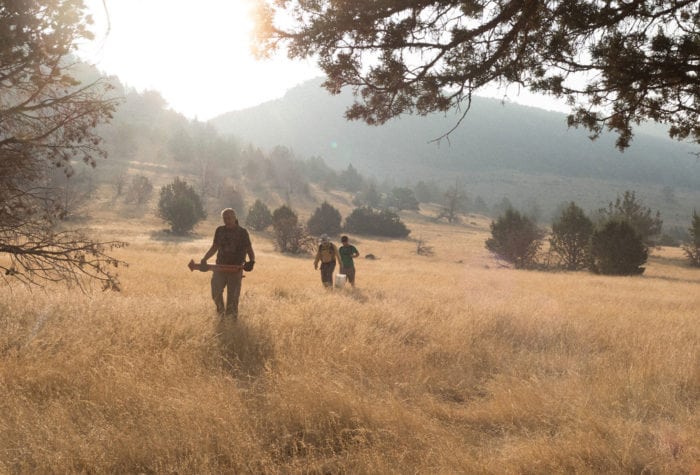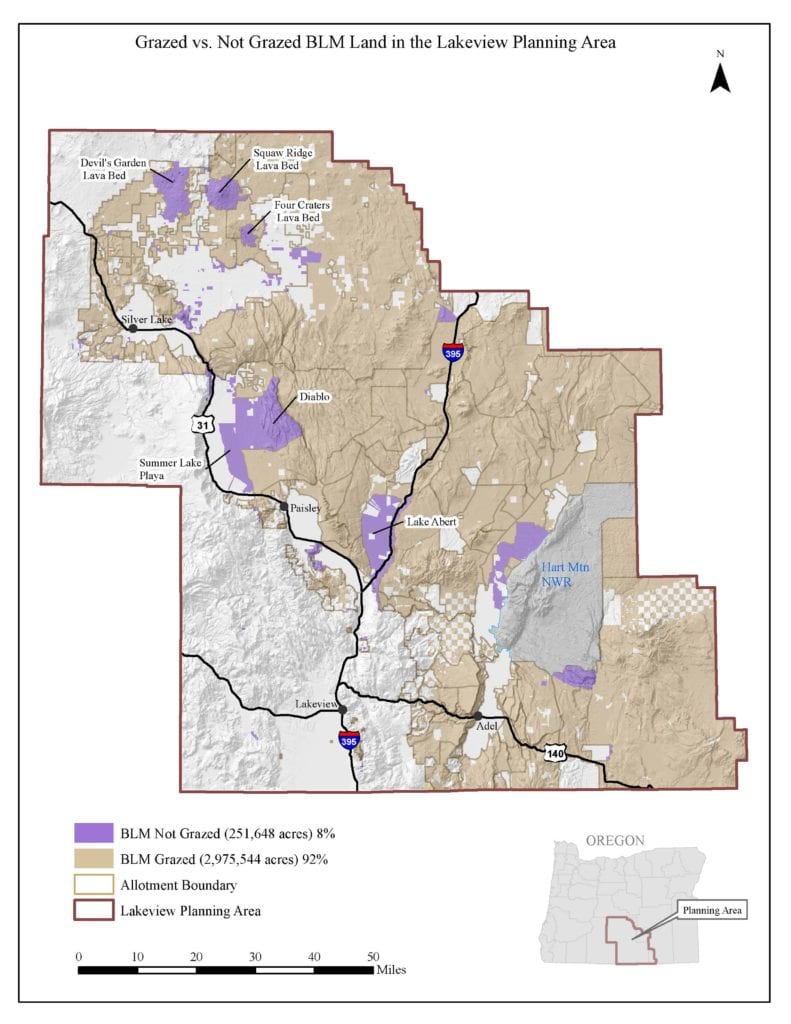Livestock Grazing
Sage Brown Website
The Scope:
The Lakeview Resource Management Plan (RMP) will establish where livestock grazing occurs and what tools are available to the Bureau of Land Management (BLM) for managing grazing.
What lands are authorized for grazing?
Under the BLM’s multiple-use mandate, grazing is one of many land uses the agency is directed to provide, though it can require certain stipulations on grazing use to protect other public use and public values on public lands. Currently, 92% of the Lakeview RMP planning area is available for grazing.
How is livestock grazing structured on the landscape?
Lands authorized for grazing are broken up into discrete regions called allotments, which are typically further divided into pastures. RMPs authorize whether allotments are open to grazing and determine the tools available to land managers in managing grazing on the landscape. For allotments authorized for grazing, the BLM may issue grazing permits and establishes an allotment-specific management plan that determines how much grazing is allowed, when grazing can occur and for how long.
What is an AUM?
An AUM stands for “Animal Unit Month” and is the amount of vegetation that one cow-calf pair, one horse, or five sheep eat in one month. AUMs are the unit of measure for how much grazing is allowed on a particular allotment. The number of permitted AUMs is also known as the stocking rate.
What grazing management options will the BLM consider during the planning process?
The BLM will consider management alternatives that analyze whether, where, how and in what manner grazing will take place on the landscape.
The BLM will analyze various management actions, including alternatives for: voluntary grazing permit relinquishment processes, the identification of areas that will no longer be available for grazing use, and closure of allotments or pastures where land health standards (used to achieve desired ecological conditions) are not being met due to livestock grazing.
ONDA’s take:
The BLM should have a process under its revised plan that will allow ranchers to voluntarily relinquish their grazing permits and a process that identifies areas no longer available for grazing.
The BLM does not currently have the authority to permanently retire grazing permits in the planning area, limiting the agency’s ability to protect sensitive ecological resources and maintain the important balance of the agency’s multiple-use mandate.

